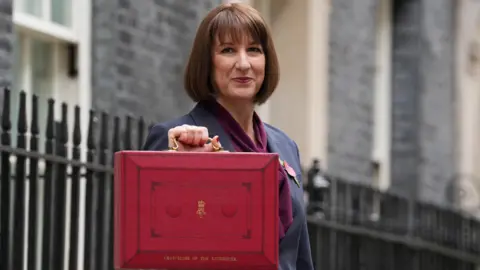Business
4 Gen Zers Explain Why They Refuse to Use AI

Alexis asked her manager to stop using ChatGPT. Delaney sees her eco-conscious friends making exceptions for the technology. Weezy said she tries to make sure none of her friends touch AI.
Much is made of Gen Z being the first “AI native” generation. Young people have grown up on AI, using it for everything from homework help to companionship, and thus can bring their skills with it into the workforce.
Many Gen Zers embrace AI — but not every young person is on board.
A McKinsey study earlier this year found that millennials, and not Gen Z, reported the most familiarity and comfort with generative AI. In a recent Slack study, 30% of millennials said they thoroughly understand AI agents, compared to 22% of Gen Z respondents.
A subsection of Gen Zers has come out fervently against AI. Those young people include both men and women, as evidenced by a multitude of TikTok comments and posts on X, though none of the young men contacted by Business Insider agreed to an interview.
We spoke with four Gen Z women to hear why they’ve become self-proclaimed AI-haters — and the lengths they’ll go to avoid the technology.
Alexis Rose Young, 23
Alexis Rose Young
As a marine biology student, 23-year-old Alexis Rose Young cares deeply about the environment. She said that she’s seen AI do “more harm than good.”
“I personally do really care about the environmental impact with the amount of carbon that AI requires,” Young said.
Thanks to the AI boom, data centers have led to an incredible demand for power, expanding their carbon footprint. A 2024 Goldman Sachs report indicated that data centers’ carbon dioxide emissions could more than double by 2030. A separate 2024 study suggested that carbon emissions for writing and illustrations were lower for AI than their human counterparts.
Young tries her best to eliminate AI from her life. She often uses Google to find companies that have integrated AI into their services so that she can turn the features off. She’s found some uses of AI unavoidable, like when her professor recently asked the class to use Grammarly.
Recently, Young’s manager in a customer service job used AI to sketch out what their monthly chalkboard design could look like. She tried to explain her concern.
“I was like, I’m sorry, I don’t mean to be unprofessional and I don’t mean to be ‘too woke,’ because some people don’t respond to that,” Young said. “I did try to tell her a little bit more.”
Cheyenne Shoemaker, 24
Cheyenne Shoemaker
Cheyenne Shoemaker used to work in mental healthcare. Now, she sees people recommending ChatGPT over therapy.
“A big part of the benefits of therapy is that therapist-client relationship,” Shoemaker said. “Our social skills have already been so affected by the rise of tech.”
Shoemaker was frustrated with humans talking to robots, whether it be makeshift therapists or customer service representatives. Also citing environmental concerns, the 24-year-old said she avoids using any AI in her life, minus a quick glance at Google’s AI overviews.
When Shoemaker heard that iOS 18 would include new Apple Intelligence features, she turned off her phone’s automatic software updates.
“There’s no reason for this,” Shoemaker said. “Why would I need AI on my phone?”
Many workplaces have begun requiring that their employees adopt AI tools rapidly to increase productivity. Would Shoemaker take one of those jobs?
“I think that would be a dealbreaker,” she said. “Ethically, I wouldn’t be able to do that.”
Then Shoemaker caught herself. The app she uses to get dog-walking gigs has an AI tool summarizing the pet’s personality.
Weezy Simes, 27
Weezy Simes
When asked for her feelings on AI, 27-year-old Weezy Simes had a quick response: “Hate it! Don’t want anything to do with it.”
Simes said that AI has been negatively affecting her work. As a florist, clients will come in with AI-generated floral arrangements made of flowers that don’t exist. As an Etsy seller, Simes has also watched AI-generated art and product descriptions flood the platform.
“My sales have been majorly down,” Simes said. “I know that some people have been protesting for various reasons, and I don’t know if it’s because of that, or if it’s just because it’s flooded with all of these AI-generated print-on-demand items. It’s like people won’t even want to look there anymore.”
Simes said she believes AI is “destroying communities, health, and the environment,” and is “responsible for creating a lot of garbage.” Aside from the in-app integrations where it cannot be avoided, Simes said that she has “never knowingly used AI.”
Her friends don’t use it, either. When ChatGPT first came out, Simes saw one of her roommates using it in place of a search engine.
“I gave her a big talking to,” Simes said.
Delaney Vetter, 26
Leigh Ann Cobb Photography/Leigh Ann Cobb Photography
26-year-old Delaney Vetter has “ethical and environmental” concerns about AI.
She remembers when Sam Altman said that OpenAI spent “tens of millions of dollars” in electricity costs on people saying “please” and “thank you” to ChatGPT models, and when The New York Times reported that families lost running water access when Meta was building a data center nearby. (A Meta spokeswoman previously told the Times that it was “unlikely” the data center affected the supply of groundwater in the area.)
Vetter watches her friends use AI for increasingly simple tasks, like drafting a grocery shopping list. These friends, she said, are “environmentally-conscious, ethical, thoughtful people.”
“AI seems to be, in my perspective, the exception to the rule,” Vetter said.
As a food and beverage publicist, Vetter also doesn’t believe that AI helps her work much. Two years ago, a PR group she worked for suggested using AI to write headlines. Vetter was skeptical. When hiring an intern last year, she noticed that many of the cover letters looked like they were written by ChatGPT.
Vetter also said she spoke to one of her employees after noticing many of their email responses were “so clearly not written by them.”
Today, Vetter said that she doesn’t use generative AI at all in her work, though she sometimes finds herself tempted.
On Zoom calls, Vetter often sees her clients using AI notetakers. She sometimes asks herself why she doesn’t use one too — but she has her reasons.
“I’m going to be taking notes because then I’m going to remember what we talked about, and then I’m going to send them over, and it’s no different than them getting an AI recap,” Vetter said. “And, a lot of times, those AI recaps are really wonky.”
Have a tip or story to share? Contact the reporter at hchandonnet@businessinsider.com
Business
Inside the Secretive World of America’s AI Data Centers

The explosion of AI across every industry has seen hundreds of water- and power-hungry server farms sprout up across the US.
Already, one-third of the world’s internet traffic flows through data centers in just one US state: Virginia.
However, until now, there has been no official record of the number of data centers in America, who owns them, or how much electricity they consume.
In an exclusive deep dive into the industry, Business Insider reporters cracked the code and, for the first time, revealed the true cost of the data warehouses feeding our growing appetite for cloud computing and AI.
We traveled to Virginia to meet people living in the shadow of 80-foot-high boxes that emit a constant drone, and to the drought-ridden state of Arizona, where some data centers are using as much as a million gallons of water a day to help cool their computer servers.
Business Insider also discovered that the power needs of data centers have forced some states to withdraw from their carbon emissions targets. Power companies are even looking to extend the life of coal and gas plants to help meet the unprecedented demand.
Click here to read our complete series of features on the US data center industry.
Take a look at Business Insider’s methodology for a full breakdown of how we conducted our research and compiled our map.
Business
When is the Budget and what might be in it?

Jennifer Clarke & Tom EspinerBBC News
 Reuters
ReutersThe Chancellor Rachel Reeves will set out plans for the economy when she delivers the Budget on 26 November.
There have been warnings that she will have to put up taxes or cut spending if she wants to stick to her own rules on government borrowing.
Before the 2024 general election, Labour promised not to increase income tax, National Insurance or VAT for working people.
What is the Budget?
In her Budget statement, the chancellor of the exchequer will outline the government’s plans for raising or lowering taxes.
It will also include big decisions about spending on health, schools, police and other public services.
The statement is made to MPs in the House of Commons.
Alongside the Budget, additional details about the measures and costs will be published by the Treasury, the government’s economic and finance ministry.
The independent Office for Budget Responsibility (OBR), which monitors government spending, will also publish an assessment of the health of the UK economy and a forecast of what it thinks will happen in the future.
What time is the Budget and what happens afterwards?
The Budget speech usually starts at about 12:30 UK time – after Prime Minister’s Questions – and lasts about an hour.
It will be broadcast live on the BBC iPlayer and on the BBC News website.
The Leader of the Opposition, Conservative MP Kemi Badenoch, will respond to the speech in the House of Commons.
MPs debate the measures for four days, before voting on them.
If approved by MPs, tax changes can come into effect immediately. However, the government must pass a finance bill to make them permanent.
What might be in the Budget?
There has been lots of speculation that Reeves might raise taxes in the Budget.
This is because she is expected to need to raise extra money to meet her self-imposed rules for government finances, called fiscal rules.
Reeves has two main rules, which she has said are “non-negotiable”:
- Not to borrow to fund day-to-day public spending by the end of this parliament
- To get government debt falling as a share of national income by the end of this parliament
However, in its last estimate in March, the OBR said the chancellor only had £10bn headroom to meet these rules, which it called a “very small margin”.
Since then the government has U-turned on planned benefit cuts that had aimed to save billions, while the cost of government borrowing has also increased.
Tax thresholds
There has been speculation that if the government wants to raise more tax without increasing income tax, VAT or National Insurance for working people, it could extend the current freeze on income tax thresholds, which is due to end in 2028.
Freezing the thresholds means that, over time as salaries rise, more people reach an income level at which they start paying tax or qualify for higher rates. This is often referred to as a “stealth tax”.
Property taxes
There have also been reports that property taxes will be reformed.
This could include replacing stamp duty – a tax buyers pay on properties above a certain value in England and Northern Ireland – with a property tax.
Landlords could have to pay more taxes, and council tax could be replaced.
One report suggested the government was considering taxing the money people make when they sell their main home in certain circumstances – this would mean changing the capital gains tax rules.
Isa reform
In July, the chancellor ruled out any immediate reform to cash Isas (Individual Savings Accounts). There had been speculation that she wanted to reduce the annual allowance to push people into investing in shares instead, to help boost economic growth.
It is possible that reform could still happen, but other measures to encourage people towards personal investment are considered more likely.
Pension changes
There is often speculation about possible changes to pension rules ahead of the Budget, such as the tax relief available to savers and the level of the tax-free lump sum which can be withdrawn.
However, previous chancellors who have been tempted to change to the higher rate tax relief on pension contributions have not done so. Cutting the relief would save the Treasury money, but may make pension savings less attractive.
Other taxes
The TUC, the umbrella group for trade unions in the UK, has called for higher taxes on online gaming companies and on banks’ profits.
How is the UK economy doing?
The Labour government has repeatedly said that boosting the economy is a key priority.
A growing economy usually means people spend more, extra jobs are created, more tax is paid and workers get better pay rises.
The latest figures show that growth in the UK economy has slowed in recent months. The economy was flat in July, after growing by 0.4% in June.
Looking at the longer term trend, the economy grew by 0.2% in the three months to July, down from the 0.3% growth seen in the three months to June, and from the 0.6% growth seen between March and May.
Meanwhile prices in the shops are still rising faster than wanted.
Inflation – the rate at which prices rise – was 3.8% in the year to July, which is above the Bank of England’s 2% target.
Despite this, in August the Bank cut its key interest rate to 4%, taking the cost of borrowing to the lowest level for more than two years.
The Bank moves interest rates to try to keep inflation on target, and cuts are less likely when price rises are above 2%.
However, the Bank cut rates because of concerns that the jobs market is weakening, with data showing job vacancies are continuing to fall and wage growth is slowing.
Lower interest rates can make loans, credit cards and some mortgages cheaper, but can also mean worse returns for savers.
Business
AI cloud surge: Oracle’s Nvidia moment? What to know about Larry Ellison co-founded firm’s sudden rise

On Wednesday, Oracle stunned Wall Street when its shares surged 36% in a single day, the company’s biggest one-day gain since 1992. The rise followed its announcement of a series of multibillion-dollar deals in artificial intelligence (AI) cloud infrastructure, including a landmark agreement with OpenAI. The rally was so dramatic that Oracle co-founder Larry Ellison briefly overtook Elon Musk as the world’s richest person before market corrections set in.The $300 billion OpenAI deal and moreAt the centre of the surge is Oracle’s $300 billion, five-year agreement with OpenAI, one of the largest cloud computing contracts ever signed. The company will provide computing resources and infrastructure to power OpenAI’s advanced models. Oracle has also struck deals with Nvidia, SoftBank, Meta, and xAI, signalling its transformation into a core provider of AI infrastructure.Backlog signals long-term growthCEO Safra Catz revealed that Oracle’s backlog of finalised contracts has reached $455 billion, four times higher than last year, and is expected to cross $500 billion soon. This backlog offers investors confidence in sustained long-term revenue, even as quarterly results sometimes fall short of projections, as reported by ET.Competing with cloud giantsOracle’s position in AI cloud computing now puts it in direct competition with Amazon Web Services and Microsoft Azure. The company expects revenue from its cloud infrastructure business to rise 77% to $18 billion this year, and reach $144 billion within four years, according to news agency AP.The billionaire shuffleThe surge in Oracle’s stock briefly added around $100 billion to Ellison’s wealth, pushing him past Elon Musk in Bloomberg’s billionaire rankings. Musk, whose fortune is closely tied to Tesla, regained the top spot later in the day. But as AP noted, the episode highlighted how AI-driven optimism is reshaping wealth dynamics among tech leaders.Why it matters for AIOracle’s resurgence positions it as a critical enabler of global AI adoption. By providing high-performance, reliable cloud infrastructure, the company is not just fuelling chatbot development but also supporting applications in robotics, pharmaceuticals, finance, and automation. Or as Ellison himself summed it up during an earnings call: “AI changes everything.”
-

 Business2 weeks ago
Business2 weeks agoThe Guardian view on Trump and the Fed: independence is no substitute for accountability | Editorial
-
Tools & Platforms1 month ago
Building Trust in Military AI Starts with Opening the Black Box – War on the Rocks
-

 Ethics & Policy2 months ago
Ethics & Policy2 months agoSDAIA Supports Saudi Arabia’s Leadership in Shaping Global AI Ethics, Policy, and Research – وكالة الأنباء السعودية
-

 Events & Conferences4 months ago
Events & Conferences4 months agoJourney to 1000 models: Scaling Instagram’s recommendation system
-

 Jobs & Careers2 months ago
Jobs & Careers2 months agoMumbai-based Perplexity Alternative Has 60k+ Users Without Funding
-

 Podcasts & Talks2 months ago
Podcasts & Talks2 months agoHappy 4th of July! 🎆 Made with Veo 3 in Gemini
-

 Education2 months ago
Education2 months agoMacron says UK and France have duty to tackle illegal migration ‘with humanity, solidarity and firmness’ – UK politics live | Politics
-

 Education2 months ago
Education2 months agoVEX Robotics launches AI-powered classroom robotics system
-

 Funding & Business2 months ago
Funding & Business2 months agoKayak and Expedia race to build AI travel agents that turn social posts into itineraries
-

 Podcasts & Talks2 months ago
Podcasts & Talks2 months agoOpenAI 🤝 @teamganassi


